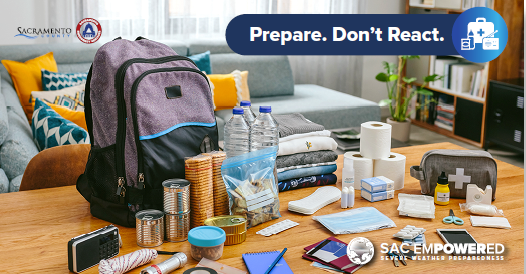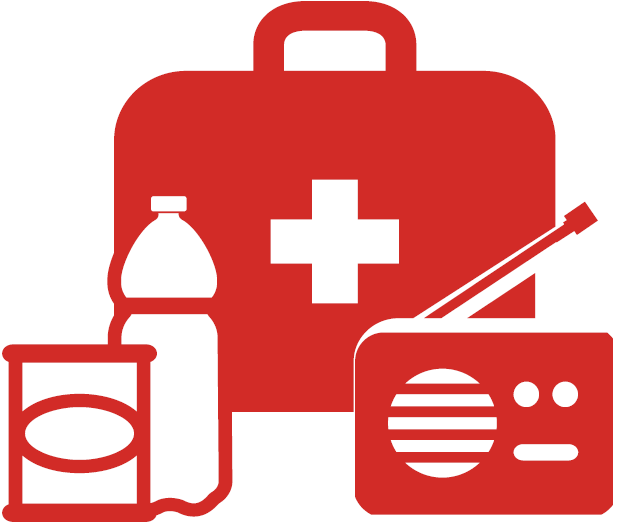Unpredictable weather shifts could put us all in some tight spots. Are you ready?
As of late, we’ve had some incredible, yet unpredictable weather shifts, so much so that they’re breaking records left and right. Many of us have never been through historically high temps or an atmospheric river until this past year. These extreme swings in weather can cause a multitude of things to happen, such as the need for an emergency kit or a Public Safety Power Shut-Off (PSPS). Keep scrolling to learn more on both.

Emergencies can happen any time, day or night. Regardless of your power supplier, your Sacramento County friends and neighbors might not know about the resources available to them during a power outage, a PSPS, or any emergency. Help out your community, especially the most vulnerable members, by spreading the word in any way you can. This Empowered Designed Community Leader Toolkit can help give you and your neighbors the right information and resources with shareable social media graphics, emergency fact sheets, videos, and more.
Preparedness
information is also available in the SacramentoEmpowered PowerPoint Presentation.

Emergency kits do not need to be expensive. You may already have many items in your home. Make emergency kit building fun and go on a scavenger hunt! Here’s a complete list of everything you might need, plus some handy tips and tricks:
In 2019, California experienced historical, record-breaking severe weather causing the creation of Public Safety Power Shut-offs (PSPS). In order to keep communities safe, local energy companies may need to turn off the power during extreme weather or wildfire conditions. This is called a Public Safety Power Shutoff (PSPS).
Both PG&E & SMUD conduct PSPS and will notify residents if a PSPS event is likely in their area. To learn more about the PSPS timeline and what to do, visit Learn about Public Safety Power Shutoffs.
Sign up for Sacramento Alerts to be informed in the event of an emergency.
For additional preparedness resources visit www.sacramentoready.org and www.ready.gov.
